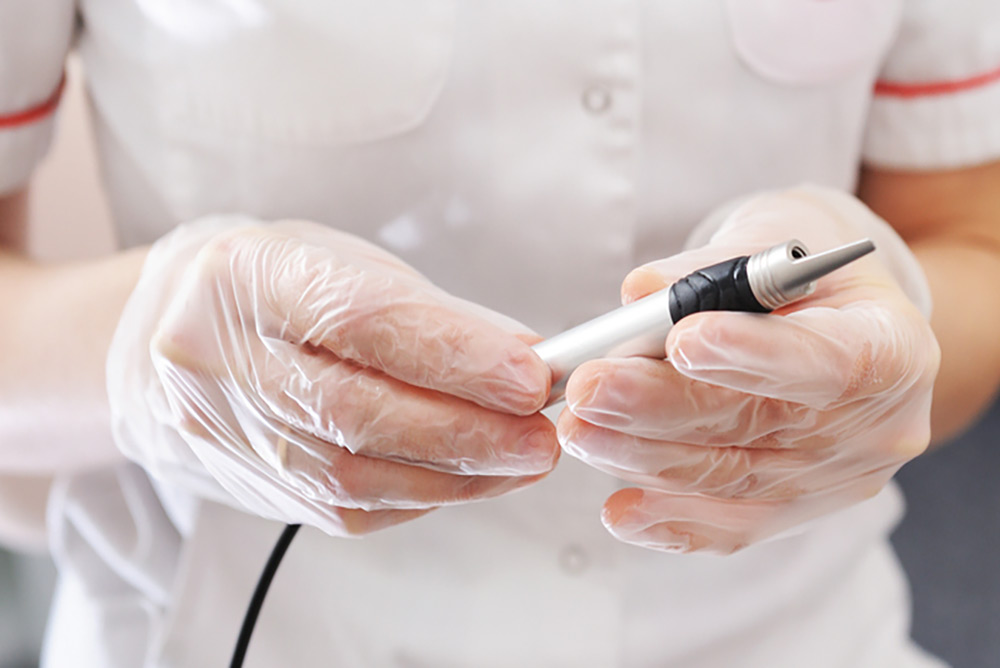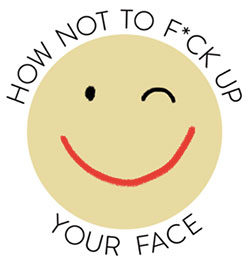If you’re interested in feeling happier about your appearance—especially as you age—you might like reading what she has to say about it. For more of her philosophical and practical advice, subscribe for free to How Not to F*ck Up Your Face at valeriemonroe.substack.com.
Two readers have asked about various skin-tightening devices, of which there are so many it’s impossible to tell you what might be right for you. So I asked HNTFUYF DermDiva Heidi Waldorf for her best advice. Here are the reader questions.
Q: I’m enjoying your fact-checking in an industry full of religious-like fervor and sales pitches we consumers are asked to simply believe. You recently mentioned Thermage or Sofwave in relation to tightening lax skin. I’m asking about Thermage, because it’s available near me. But are other radiofrequency lasers as effective for tightening? I’ve noticed very different prices in my area for different lasers and wonder if cheaper options aren’t as good. Are they all created equal?
Second, is there any anti-aging preventative effect to using lasers earlier in life? I’ve heard some say that, for example, using Botox early has preventative effects for wrinkles/lines, but I doubt this is true.
And . . .
Q: My question is about jowls. Can anything be done to tighten them up and minimize chin, jaw, and neck sagging? I’ve had Kybella under my chin, and despite feeling like I was being attacked by murder hornets, the results were just okay. I understand Kybella melts the fat, and jowling must be caused by something more insidious, like gravity or genetics. What are people doing these days to keep the under-chin area fit?
A: I’m going to pass this along to Waldorf in a minute but first: When I read phrases like “anti-aging preventative effect” and “jowling must be caused by something more insidious, like gravity or genetics,” though I understand the feelings that precipitate them (I have them, too), it makes me sad. Our psyches and bodies are so vulnerable! And our largely ageist beauty culture constantly reminds us how poorly we’re faring.
Here we are, inching precariously along the high wire between the darkness that delivered us and the darkness that awaits—in what currently feels like a heavy wind—and what encouragement do we get? Heckling about our sagging jowls and crow’s feet. I want to remind you that aging, gravity, and genetics are not insidious, but each a miracle. You are a miracle, with all your imperfections. It might be time to reintroduce yourself.
Now, if you decide to avail yourself of in-office aesthetic treatments for whatever reason—and if the reason’s good enough for you, it’s good enough for me—here are a few general guidelines about getting the best results.
“As the saying goes, ‘Many roads lead to Rome’—or to put it less elegantly, ‘There are many ways to skin a cat’” said Waldorf. “What I mean is, there are lots of options to accomplish the same goal.”
That’s why Waldorf’s recommendation is to choose the doctor, not the device.
Why? Because tightening can be accomplished several ways, depending on the condition of your skin. It can be done without breaking the skin using radiofrequency or ultrasound. Or it can be done by resurfacing the skin using various lasers, radiofrequency, radiofrequency microneedling, or with some combination of those.
To clarify for the first reader who seems to be confused about what these devices are: Laser stands for light amplification by stimulated emission of radiation. Waldorf explains:
- An ablative fractional laser destroys the outer layer of the skin and deposits heat to stimulate collagen renewal (more downtime; more dramatic results)
- A non-ablative fractional laser deposits heat to the epidermis and dermis without destroying them to stimulate collagen renewal (often requiring several treatments for results)
- Radiofrequency tightening bypasses the epidermis and delivers heat through the electrical resistance of the dermis and subcutaneous skin to stimulate collagen remodeling
- Microfocused ultrasound bypasses the epidermis, delivering heat to the deeper dermis to stimulate collagen remodeling.
About that “electrical resistance of the dermis”—once I’ve figured out exactly what it means, I’ll let you know. In the meantime . . .
“There are no clear side-by-side comparisons of these devices, so I can’t say if one is ‘better’ than another,” said Waldorf. “However, we know the amount and type of heat each device can generate and the depth it can penetrate. That’s what should guide the recommendation of a device, based on the quality of your skin and subcutaneous tissue.”
The main thing to keep in mind is that lax and photodamaged skin with poor support is least likely to show improvement using a noninvasive tightening device without also resurfacing the skin. Younger, less photodamaged skin with good support will get the most benefit from noninvasive tightening alone, said Waldorf.
If your skin lies somewhere between those two categories, a frank discussion with your doctor should help you understand whether the results will be worthwhile, given your expectations and budget. I say this a lot, because it’s true: The less a device has to do, the better it works.
But it’s not your job to figure out which device is going to give you the most bang for your buck, or where to find the least expensive treatment. It is your job to ask a doctor (not an aesthetician) serious questions about what a recommended device might do for you and to accept the answer (even when it’s not what you wanted to hear). For example:
- Is it the best option for my skin?
- What results might I expect and and how long might it take to see them?
- How noticeable might the results be?
- How long might they last?
- How variable are results for someone my age?
- Is there downtime and what’s involved?
Preventative skincare (sun protection, not smoking, a healthy diet) and starting targeted treatments at the first signs of aging can help maintain a fresh appearance longer, said Waldorf. I’ll put it another way: If you’re concerned about wrinkling and generating jowls as you age (a natural phenomenon), you might start in-office treatments when you first notice any wrinkles or sagging that bothers you, which may give you more visible results for a longer period of time.
Starting an annual or biennial noninvasive tightening procedure when the skin begins losing its spring can slow the march of time across your face, said Waldorf. Eventually, though, as long as you live and breathe, your face will exhibit aging; you’d be wise to accept that. Because there’s a rabbit hole here I don’t want you to fall into.
Regarding neurotoxin injections as a wrinkle preventative, Waldorf says it’s true ‘tox injected between the brows of a squinter before wrinkles start forming can inhibit their development. You can also be vigilant about wearing sunglasses, which will help you avoid squinting, as well as protecting your eyes from UVA/UVB damage.
MyLittleBird often includes links to products we write about. Our editorial choices are made independently; nonetheless, a purchase made through such a link can sometimes result in MyLittleBird receiving a commission on the sale. We are also an Amazon Associate.


